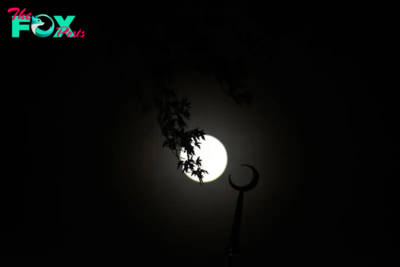Science
James Webb telescope detects signs of rust on priceless, metal-rich asteroid Psyche
Scientists using the James Webb Space Telescope (JWST) have identified a component of water on the mysterious metal-rich asteroid Psyche. The findings suggest the hydration exists as rust and may shed light on how this enigmatic object formed.
The asteroid 16 Psyche is pretty unusual for the main asteroid belt between Mars and Jupiter. Measuring an enormous 173 miles (280 kilometers) at its widest, the potato-shaped object was once thought to be wholly metallic. Psyche's supershiny surface had led researchers to suggest the asteroid was possibly the iron-rich heart of a planetesimal (a planetary building block) and could unravel how Earth and the other terrestrial planets formed. Some have valued the asteroid’s rare metal components at $100,000 quadrillion — a literal goldmine in space.
This hypothesis about the rock’s composition, in fact, is what motivated NASA's ongoing Psyche mission. Launched in October 2023, it's expected to reach the asteroid in 2029 to study it in-depth.
But all that glitters isn't gold — or even metal. Over the past decade, new data about Psyche's density and reflectance spectra — the intensity of different wavelengths of sunlight reflected off the asteroid's surface ― suggest it is most likely a mixed silicate and metal world.
Related: NASA's most wanted: The 5 most dangerous asteroids to Earth
In 2017, researchers discovered tantalizing traces of another component: water. Spectra from the infrared region, at long wavelengths that we perceive as heat but can't see, showed the signature of hydroxyl units — the OH molecule, which forms part of water.
These results suggested Psyche's surface may contain small amounts of water, as either ice or hydrated minerals. But the results were inconclusive, since the spectrum, collected using NASA's ground-based Infrared Telescope Facility in Hawaii, may have been corrupted by water in Earth's atmosphere. Besides, the researchers hadn't found a more definitive signature of water from a slightly higher infrared wavelength. That signature has helped other astronomers "detect widespread molecular water on the Moon but had not yet been used for asteroids," study author Stephanie Jarmak, a planetary scientist at the Harvard and Smithsonian Center for Astrophysics, told Live Science in an email.
-

 Science2h ago
Science2h agoHow to See the ‘Beaver’ Supermoon—the last of 2024
-

 Science5d ago
Science5d agoInside Capitol Hill’s Latest UFO Hearings
-

 Science5d ago
Science5d agoYou Won’t Want to Miss the Leonid Meteor Shower. Here’s How and When You Can See It
-

 Science5d ago
Science5d agoHere’s What Trump’s Win Means for NASA
-

 Science1w ago
Science1w agoWhy Risky Wildfire Zones Have Been Increasing Around the World
-

 Science1w ago
Science1w agoIt’s Time to Redefine What a Megafire Is in the Climate Change Era
-

 Science1w ago
Science1w ago4 Astronauts Return to Earth After Being Delayed by Boeing’s Capsule Trouble and Hurricane Milton
-

 Science1w ago
Science1w agoThe Elegance and Awkwardness of NASA’s New Moon Suit, Designed by Axiom and Prada



























